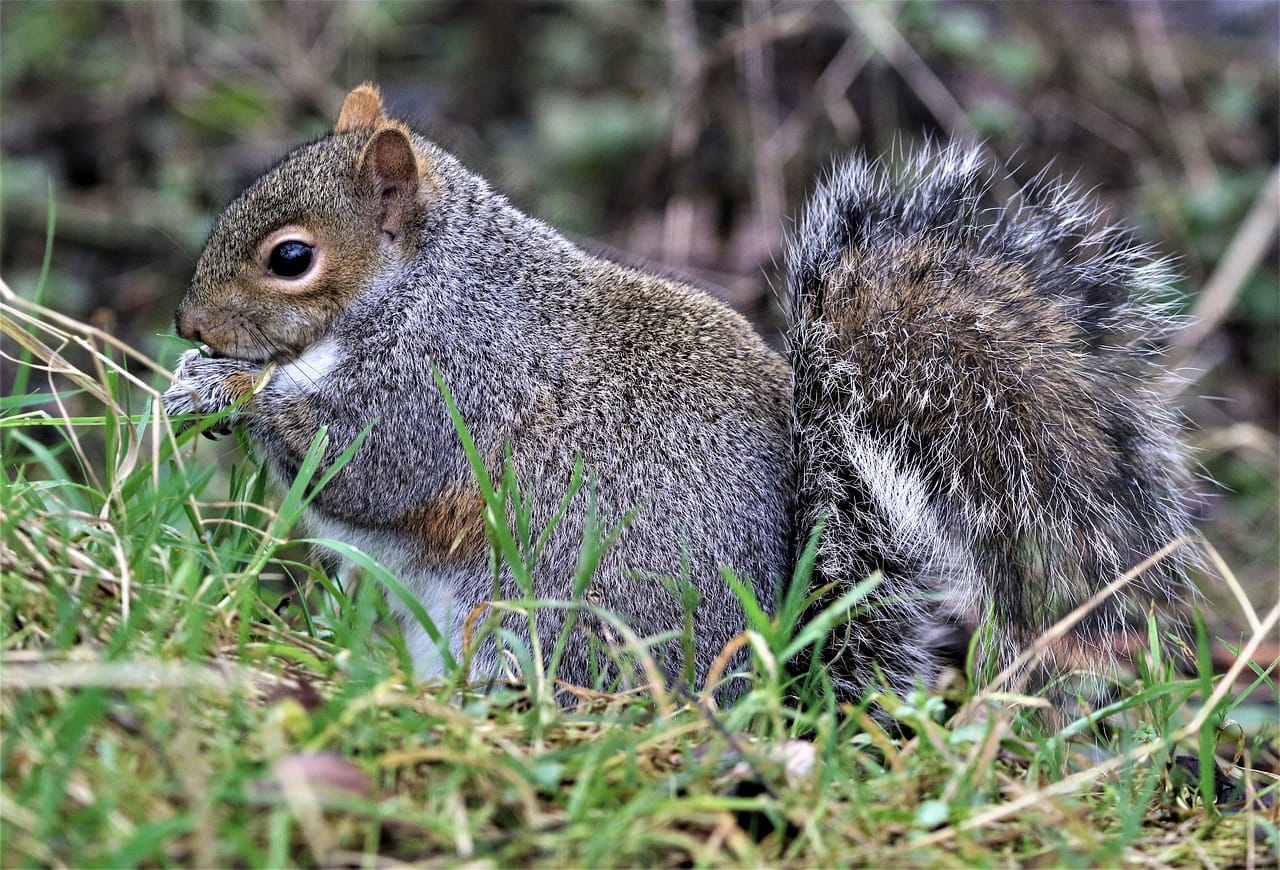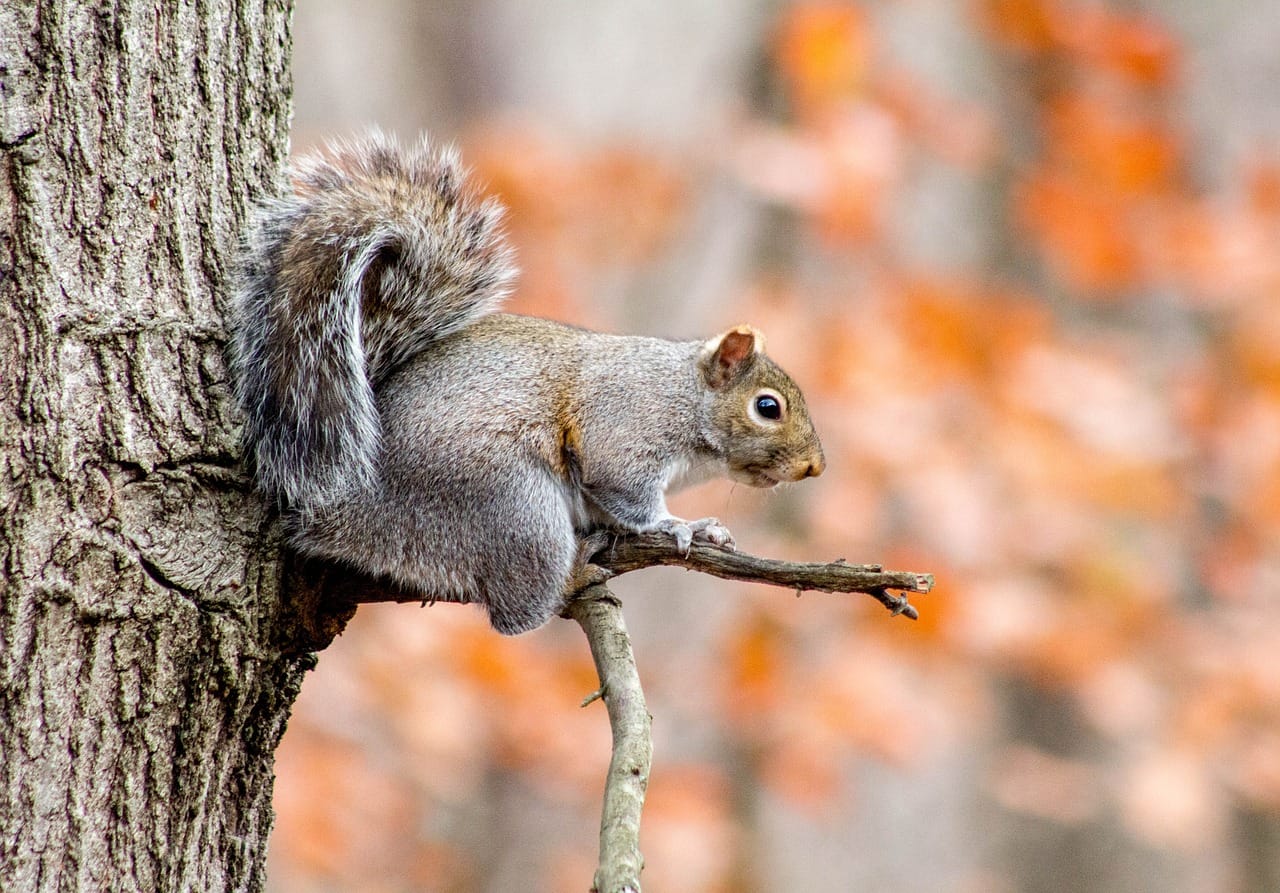Squirrel damage just like any other rodent is not good for buildings or houses. Squirrels are constantly chewing, and since their teeth are always growing, they have a desire to chomp at hard objects to maintain their sharp and trim. That is why, you will often see a squirrel munching on bark, wood or sticks in the park or forest.
Unfortunately, if you have a squirrel infestation in your attic you need to call squirrel removal Toronto immediately because they are likely to chew on anything that they can get a hold of. This includes your electrical wiring, wooden beams and anything else in their vicinity. This kind of damage is not good for buildings. If there is extensive depletion of your home’s structural beams, it could easily result in the collapse of your roofs and walls. When squirrels chew through your electrical wires, it’s a potential fire hazard that could burn down your house.
Signs of Squirrels in the Attic
Unless you have physically seen the squirrel going in and out of your attic, noise in the attic isn’t a sure sign that the squirrel is the culprit. There are other pests such as rats or raccoons that might be the issue. Signs that you have squirrels in the attic include;
- Chewing, scratching, and rustling sounds coming from your walls or attic. This sounds will be heard in the morning or evening when the squirrels are in their nest
- Foul odour. After some time, their droppings and urine will begin to stink from your attic.
- Discovery of actual droppings in your household. However, you need to be sure they are squirrelling droppings since they resemble some other rodents.
- Squirrel nest in your attic or property. One distinguishing characteristic about squirrels is they will have several different nests in a single property.
- Squirrel activity in your property. If squirrels are frequently running around your fence, utility lines or roof, you could have squirrels in your attic.
- Destruction in your yard. Squirrels are known to dig up holes in your property, eating plants and barks.
- Fighting squirrels in your attic. This is perhaps one of the best indicators that you might have a growing squirrel population in your attic.
The signs of a squirrel problem also extend outdoors because this is where the wildlife scavenges for food. Outdoor signs of a squirrel infestation include;
- Hollow openings in tree trunks or squirrel nests in trees
- Seeing squirrels entering or leaving the house through the roof
- Young trees with chewed barks
How to Get Rid of Squirrels in the Attic
Have you heard chewing, pitter patter or rustling in your attic? Scratching and scampering? In case you frequently hear these sounds, you could easily have a squirrel problem in your attic. During fall, squirrels in Ontario will often look for warmer places to spend their winters, and your attic may seem like the tropics to them. Many animals are likely to get into your attic during the winter, but one distinguishing factor is squirrels are active during the day when most animals tend to be nocturnal. If you are sure you have squirrels in your attic, you need to find ways of getting rid of them immediately. Squirrels in your attic is never a good thing.
Once you have noticed squirrel activity in your attic, you do not want to let them leave on their own. In case your home provides all the right elements for them to thrive, they might not leave altogether. It can be difficult to get rid of squirrels in your attic, reason why you should let a professional help you out. However, if you are determined to remove them by yourself, here are steps you can take.
- The first line of action is to determine their entry points. At these points, you could install one-way exclusion doors, so that, when they exit your attic, they can’t get back in.
- Traps and cages can be installed in the roof, and under the eaves, however, these methods are not entirely effective.
- You could also get DIY chemicals from your local hardware shop. Please note that these chemicals could be harmful to your family if applied carelessly or mixed incorrectly.
- You could also contact your local pest control service. This is perhaps the easiest and safest method. A trained professional will easily get rid of the squirrels without causing harm or damage to your property. They are also knowledgeable about trapping these animals and will have a permanent fix to get rid of them for good.
The first step to getting rid of the squirrels in your attic is to figure out how they are getting access into the home in the first place. Common entry points include roof vents, chimneys, dormers, ventilation pipes and soffits. Seal all the possible access areas preferably with metal flashing or galvanized steel mesh. Inspect and reinforce all other possible entry points focusing on interior and exterior walls, floors, sidings and roof leading up to your attic.
Next, install a one-way door on the specific entrance hole that you suspect the squirrels are using to get access to the attic. This entry point should be relatively easy to identify. Look out for signs of squirrel droppings and nesting debris such as kindling, leaves and sticks near the entryway.
Alternatively, use a piece of foam or newspaper to block the hole you suspect the squirrels are using. Check after a day or two. If the foam or newspaper is disturbed, it’s a sign that you have found the primary access hole.
The one-way entry door cage allows the squirrels to get out but blocks their entry back in. Leave the cage for up to a week or until you stop hearing noises in the attic. Note that this cage doesn’t trap the squirrels; it simply lets them out of the attic but prevents re-entry.
Mothballs and Squirrels in the Attic

Mothballs are an alternative method used to get rid of squirrels in your home. However, using this remedy needs extreme care. Mothballs are harmful, and have negative aspects, especially if you have young children and pets in your home. Mothballs are made of naphthalene and work to remove squirrels from your attic. However, it’s only a short-term remedy. This is because the smell of the mothballs over time fades and the squirrels will get back.
Mothballs are normally placed in the attic to chase squirrels away. When the squirrels have moved out, it is important that any holes that are left in the attic are repaired. Any food that the squirrels were eating also needs to be removed, or the squirrels will return.
As stated, mothballs are a risky method to get rid of squirrels, since they are highly poisonous to pets and people. In case you have pets and small children, you should not use this method. There are better forms of squirrel repellents that are less hazardous and potent than mothballs. Human urine, a rag soaked in ammonia or pine scented cleaner diluted with a gallon of water will suffice.
You could also contact your local squirrel removal expert to perform this task for you. They will have easier, safer alternatives for getting rid of the pest stress-free.
What Damage Can Squirrels Do in the Attic

Squirrels get babies twice in a year. During spring and fall. At these times, they are constantly looking for shelter to build their nests. Squirrels can easily get into your attic by chewing holes from outside, typically above the gutters. They could also get into your attic by chewing trim corners or weak areas that will grant them access into your attic.
Often, squirrels will cause damage to your attic insulation or will chew through your cabling and electrical wires. More significantly, is the damage they can cause to the exterior of your attic. As they give birth to more litters, they will grow, leave their initial nest and build different nests within your attic.
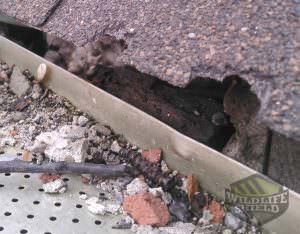
In case their population is not controlled, they will continuously chew holes throughout your attic, and sometimes, through every corner of your house. This could potentially cause your house to collapse in case the structural beams have been chewed up and are not strong enough to hold it anymore. They could also cause a potential fire hazard when they chew through your electrical wiring. The longer squirrels stay in your attic, the more entry point they are likely to create.
What Should You Do To Get Rid Of The Squirrels From Your Attic
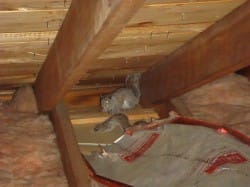
Squirrels are a very destructive and a noisy bother once they occupy the attic of the house. Once these animals gnaw through the roof or eaves they live in your insulation, hence soaking it with their urine as well as littering the attic with their droppings. Eventually, squirrels can also become a very serious fire hazard if they chew the electric wires. Immediately you discover that you have squirrels in your attic, it is essential to get rid of them soon enough. The longer you take, the trickier the assignment will be.
Search carefully for all the entry points and for any evidence of nesting; squirrels make nests and tunnels in the insulation. Also, check for any stains and droppings on the floor of the attic to locate the travelling paths of these critters.
Decide on the type of trap to use. The squirrels are lighter and smaller so there is greater possibility that they will escape from the substandard economy traps. A repeater trap, which holds multiple animals, is the most effective to control their population. The commercial live trap is another option; however, it only holds one creature at a time. An excluding repeater trap can as well be used for filling out the entry points and at the same time excluding more squirrels from getting in and trapping those getting out. This is a very significant tool if you have discovered all their entry points.
Place traps along travelling routes and in the insulation nests. Make sure all the traps are strategically positioned; otherwise you won’t catch the squirrels.
Once you catch the squirrels, cover the traps with a towel and then drive it at least a few miles away from your home and release them. The most important thing is to handle these creatures in a more humane manner. Don’t forget that they are very smart creatures that can find their way back home if you just release them nearby.
Wait for at least three weeks so as to make sure that the whole population is gone and then go ahead and seal permanently all the holes, openings and their entry points with steel wire or copper wool. The squirrels can’t chew through this kind of materials.
Removing Squirrels from the Attic
Getting rid of squirrels from the attic is a matter of urgency but can be complicated especially for novices. The main idea is to get the animals out unharmed and keep you safe. Exclusion or eviction stands out as the most humane way to deal with wildlife on your property and is the method most preferred by experts.
Step 1: Find Entry Points
Inspect your home top to bottom starting from the exterior to the interior to find all possible entry points. Any hole or gap more than 1 ½ inches wide is enough for squirrels to squeeze through. Take your time to make sure that you have all the potential routes that the wildlife may be used to get into your home.
Sep 2: Identify the main entry point
This will be where you have seen squirrels leaving the attic or that has evidence of recent squirrel activity. If you are still not sure, seal all the potential entry points loosely with cardboard or balled-up newspaper. Wait a day or two and inspect the holes. The one with the sealing disturbed is the main entry/exit point.
Step 3: Seal Your Home
Seal all the holes, gaps and cervices with galvanized steel mesh or metal flashing. Again, make sure that you have all the potential entrances. Leave only the main entry/exit while you seal.
Step 4: Install a One-Way Door
Install a one-way door on the main entrance. This is a spring-loaded door that installs flash on the entrance. The door easily pushes outward to let the animals out but as the name suggests; won’t open in the reverse direction effectively keeping the squirrels out. Check back every few days for up to a month or until you are sure that there is no more squirrel activity in the attic. Remove the one-way door after confirming there are no animals trapped inside and seal the remaining entrance with metal flashing or galvanized steel mesh.
Step 5: Clean and Repair the Attic
There is probably a lot of damage that needs repairing including chewed wood, wires and plumbing. You also need to replace your insulation if the animals have been using it to make their nests or contaminated it with their nest, feces or urine. Clean the area thoroughly with a disinfectant. Wear protective clothing including a face mask, rubber gloves, disposable jumpsuit and plastic over your shoes.
Why Trapping Squirrels is a Bad Idea
Trapping the squirrels for relocation may seem like the humane or sensible thing to do but this is not the case. Note that wildlife is protected in Ontario and it is illegal to kill, torture, harm or transport wildlife (including squirrels) for more than a kilometre. Trapping squirrels may be considered as torture because it distresses the animal and exposes it to predators and the elements. The squirrels may also injure itself as it attempts to escape from the trap.
Trapping a mother separates it from its young who are unable to fend for themselves. The younglings die from starvation and exposure which is far from humane.
Lastly, relocating squirrels means that the animals have to find water, food and shelter in an unfamiliar territory. The relocation also exposes the squirrel to territorial disputes with the resident animals especially if there is a shortage of food.
How to get rid of squirrels in your attic
Squirrels take up residence in your attic from February to October, generally to nest and raise their young.
The first thing to understand is that you should not try to catch the squirrels. In Ontario, wildlife, including squirrels, is protected. It is illegal to kill squirrels, cause them suffering, or transport them for more than 1 kilometre.
Before you do anything, wait a while. Once the squirrel babies reach four months of age, they are independent. The squirrel family will leave the den and disperse. So, if you wait until the family has gone, you can then seal up all access points to keep squirrels out in the future.
How to get squirrels out of attics
The best way to get squirrels out of your attic is to hire a professional, humane wildlife removal company to perform the work, rather than taking the DIY route. Do-it-yourself solutions can be expensive and generally have a very poor success rate.
However, you could try to deter squirrels humanely by taking a few simple steps. Mother squirrels love your attic because it’s a quiet, dark, and safe place to raise a family. So, the easiest way to get squirrels out of your attic is by making it an unfriendly environment for them:
- Place a bright, fire-safe light at the entrance to the den, either inside or outside.
- Keep a radio that’s tuned to a talk station switched on close to the den entrance; a human voice is threatening to squirrels.
- Put some dirty kitty litter or rags soaked in ammonia in a plastic bag. Make a few holes in the bag so that the smell can escape. Hang the bag next to the den entrance. Both these substances smell like a predator and will deter the mother squirrel from nesting in the attic.
Be patient, and try all of the above for three days and nights. To test if the squirrel has gone, plug the den entrance with a ball of rolled-up newspaper. Wait another few days and nights. If the attic is silent and the paper is still firmly in place, the squirrels have most likely left.
Take steps to plug any holes so that the squirrels can’t return in the future.
If the squirrels are still there, do not try to trap the squirrels yourself. Always hire a specialist wildlife pest removal contractor to do the work for you.
Do squirrels cause damage in your attic?
The amount of damage that squirrels can cause in your attic depends on several factors:
- Number of squirrels
- Presence of electrical wiring, water pipes, etc
- Type of loft insulation
Damage to insulation
Depending on the type of insulation that you have in your attic, squirrels might decide to use it for nesting material. Over time, the rodents will tear large lumps out the insulation material, eventually rendering it ineffective, and enabling expensive heat to escape from your home.
Nesting material
Squirrels often bring huge amounts of nesting material into an attic den, including leaves and other plant matter. That material will rot, harbor pests, and could present a fire hazard.
Hygiene
Over the course of a breeding season, a family of squirrels will generate a huge amount of feces and urine, soaking your insulation and creating a foul odor that will eventually permeate the rooms below.
Also, squirrels can carry ticks and fleas, which, in turn, can carry diseases, some of which can infect humans and pets.
It’s not uncommon for squirrels to die in the attic, attracting flies and other pests, as the bodies decompose.
Damage to wires and water pipes
Squirrels are rodents, and, like all rodents, they love to chew. Rodents’ front incisor teeth grow continually, and the squirrels have to gnaw on things to wear down their teeth.
Damaged wiring can present a serious fire risk, and a leaking water pipe could cause water damage to the fabric and décor of the rooms in your property directly underneath the attic.
Damaged woodwork
Squirrels also chew and gnaw wood, including the wooden beams in your attic and wood roof slats. Squirrels will also chew through wood to gain entry to your roof space.
Are squirrels in attic dangerous?
Squirrels are not dangerous, as long as they are left to their own devices. Most of the time, squirrels will simply run away if you approach them.
However, if you attempt to catch or handle a squirrel, you may receive a very nasty bite. Also, a mother squirrel with a nest full of babies will readily attack an adult, child, or pet if cornered or threatened.
Squirrels are very territorial, and although rabies is very rare in rodents, the virus does make affected animals unusually aggressive, and there have been cases where squirrels with rabies have attacked people.
Squirrels can carry parasites, such as fleas, ticks, and worms, all of which may carry diseases that could affect your family or pets. There’s a very real danger that fleas could enter your property by hitching a ride on the squirrels in your attic, and before you know it, you have an infestation throughout your home.
So, although it can be entertaining to watch squirrels’ antics as they scurry around your backyard and leap from branch to branch in your trees, you should never try to catch one, and you certainly don’t want them inside your house. If you have squirrels in your attic, always call a wildlife professional to remove these undesirable four-legged squatters safely.
How much does it cost to get rid of a squirrel in the attic?
Although you might try to save money by taking the DIY approach to removing squirrels from your attic, it’s highly recommended that you call a professional wildlife removal firm to do the job.
A contractor will carry out the following action to solve the squirrel problem for you:
- Locate all entry points to the attic
- Seal all entry points, using galvanized steel mesh or metal flashing
- Install a one-way door so that once the squirrels leave the attic, they can’t get back inside.
- Return to your property to remove the door once the squirrels have gone
- Seal up the remaining entry point
Unlike other options that you might try yourself, the work carried out by a professional wildlife pest removal firm will save you a lot of time and hassle. Also, you have the peace of mind that all the work is guaranteed for two years.
The typical cost for removing squirrels from your attic varies from $329.
Does homeowner insurance cover squirrel damage in your attic?
So, if squirrels get into your attic and cause damage, will your homeowner insurance policy pay for any repairs?
Unfortunately, most homeowner insurance policies contain a clause, which states that they will not cover any gradual damage that rodents cause. However, insurance does usually cover sudden or unexpected damage.
For example, if squirrels get into your attic and chew through the water pipes so that water leaks through the ceiling and damages the carpets and furniture in the room below, then the insurance company should pay up. However, if the damage goes unnoticed for six months before the leak becomes apparent, it’s likely that the insurance company will refuse to payout.
If you buy a new house and squirrel damage is not discovered during the initial survey, then the insurance will pay. However, if you didn’t have a survey carried out or you ignored the advice of the inspector, then the damage is not covered by your homeowner’s insurance.
However, if a major defect was overlooked during the pre-purchase home inspection, such as a missing sewer vent through which squirrels subsequently entered the property, your homeowner policy will not cover the damage. That said, the inspector’s professional liability insurance might compensate you for any repairs that are necessary.
So, if the squirrels entered the attic through no fault of yours, you should seek legal advice about how you can get compensation for the damage.
Why You Should Hire a Wildlife Control Expert
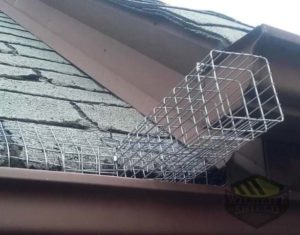
You should always assume that the squirrel nesting in your attic has a litter. The typical litter has about 4-5 baby squirrels but can have up to 7. The newborns are left behind while their mother goes to forage so locking the mother out will cause the offspring to die of starvation or dehydration. Just because you haven’t seen the litter doesn’t mean it is not there. Squirrels are fond of tucking their litter away safely inside wall cavities and other crawl spaces.
A desperate female squirrel can cause severe damage attempting to break into the attic to reunite with its litter. The expert knows where to look for the litter and how to handle it safely so they will be reunited with their mother.
Getting rid of squirrels in the attic sounds easy enough and it is as long as you take all the factors into account. There are a number of technical aspects that go into a successful evacuation which is the reason you should leave the job to the experts.
For one, it is difficult to tell whether the squirrel you excluded has younglings. A mother will do anything to get to its young and this often includes further damage to your property. In the event that the mother is unsuccessful, its young die from lack of food. You are now faced with rotting carcasses and a morbid situation.
Even a successful exclusion doesn’t guarantee that you are free from pests. You may simply switch one pest problem for another. Squirrels leave evidence of their residency including urine and excrement. This may signal other, possibly smaller pests, that your attic is an ideal nesting place.
There are also strict wildlife laws in Ontario that govern how you can get rid of squirrels, what you can do and can’t do with them and so on. Remember that this is a protected species and you could inadvertently attract a fine in case you injure or kill the squirrel even by accident.
There are other humanitarian considerations such as what to do about squirrels during winter. Evicting them, assuming that the litter can follow their mother through the exclusion door, may be condemning them to starvation or death by freezing. The chance that the squirrels will find warm shelter and alternative sources of food in time to survive the winter is minimal.
Decontaminating and sanitizing after the eviction is also a dangerous job that requires the utmost care. Squirrel feces and urine is considered toxic material and is home to plenty of parasites, bacteria and viruses some of which can be inhaled. A wildlife removal expert in Ontario has the safety equipment to handle the job safely and industrial-grade cleaning agents to disinfect successfully.
Lastly, only an expert can find all the potential entry points and seal appropriately. Make sure that you get a warranty for the job to ensure the best result.
Article Updated: January 16, 2020

